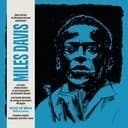Interval Formula and Scale Construction
F♭ Dorian follows the universal Dorian interval formula W-H-W-W-W-H-W (whole-half-whole-whole-whole-half-whole), producing the notes F♭-G♭-A♭♭-B♭♭-C♭-D♭♭-E♭♭-F♭. The defining characteristic of any Dorian mode is the major sixth degree—in this case, D♭♭ (enharmonically C natural). This raised sixth distinguishes Dorian from F♭ Natural Minor, creating the signature "bright minor" quality musicians associate with the Dorian sound. The scale contains intervals of root, major 2nd, minor 3rd, perfect 4th, perfect 5th, major 6th, and minor 7th. However, the extreme notation complexity—featuring four double flats (A♭♭, B♭♭, D♭♭, E♭♭)—makes this scale completely impractical. Each double flat corresponds to a simpler enharmonic equivalent: A♭♭ = G, B♭♭ = A, D♭♭ = C, and E♭♭ = D, revealing why E Dorian (E-F♯-G-A-B-C♯-D-E) represents the identical pitches with far more readable notation.
Relationship to E♭♭ Major and Enharmonic Equivalence
As the second mode of E♭♭ Major (which itself is enharmonic to D Major), F♭ Dorian theoretically shares the same notes as its parent scale but emphasizes F♭ (enharmonically E) as the tonal center. This relationship demonstrates an important music theory principle: while modal relationships are valid across all enharmonic spellings, practical musicianship demands readable notation. F♭ Dorian is completely enharmonic to E Dorian, meaning every pitch sounds identical—only the written notation differs. This one-to-one correspondence makes E Dorian the universally preferred spelling in all musical contexts, from jazz improvisation to classical composition. Compared to other Dorian scales like the iconic D Dorian (the reference point for Dorian sound, using only white keys) or C Dorian, the F♭ version offers no practical advantage and introduces severe reading challenges. Understanding this enharmonic relationship helps musicians recognize that theoretical correctness sometimes yields to practical clarity.
Practical Applications and Why E Dorian is Preferred
In all real-world musical applications—jazz improvisation, rock composition, funk grooves, modal harmony exercises, and contemporary music production—musicians use E Dorian rather than F♭ Dorian. The two-sharp key signature of E Dorian (F♯ and C♯) makes it instantly readable and comfortable for performers across all instruments. Guitarists particularly favor E Dorian because it sits naturally in open position with resonant open strings, creating the full, rich sound characteristic of modal rock and fusion styles. Jazz improvisers use E Dorian over Em7 chords to craft sophisticated melodic lines with smooth voice leading. The characteristic i-IV progression (Em-A) delivers the quintessential Dorian sound heard in countless compositions. In contrast, attempting to read or perform F♭ Dorian would require constant mental translation of double flats, significantly increasing cognitive load and risk of errors. No published compositions use F♭ Dorian notation; it exists solely as a theoretical construct demonstrating enharmonic relationships. For learning the Dorian mode's applications across genres, study E Dorian alongside other practical Dorian scales like D Dorian and A Dorian.
Learning Tips and Practical Recommendations
Musicians should always use E Dorian instead of F♭ Dorian for all learning, practice, and performance purposes. Begin by mastering E Dorian's interval structure and comparing it directly with E Natural Minor—play both consecutively to hear how the raised sixth (C♯ versus C natural) transforms the minor sound from dark to bright. Practice E Dorian over Em7 chord vamps, emphasizing the major sixth degree in your melodic lines to internalize the characteristic Dorian color. Study the relationship between E Dorian and its parent scale D Major to understand modal thinking. Learn from iconic Dorian examples like Miles Davis's "So What" (originally in D Dorian) and transpose those concepts to E. For guitarists, explore open-position fingerings that incorporate the resonant open E and B strings, creating the full-bodied Dorian sound that makes E Dorian so popular in rock and fusion. The theoretical existence of F♭ Dorian serves primarily as an academic example of enharmonic equivalence—understanding why musicians prefer simpler spellings reinforces the importance of practical notation over theoretical complexity. Focus your practice time on E Dorian, which provides all the musical benefits without the notation confusion.





